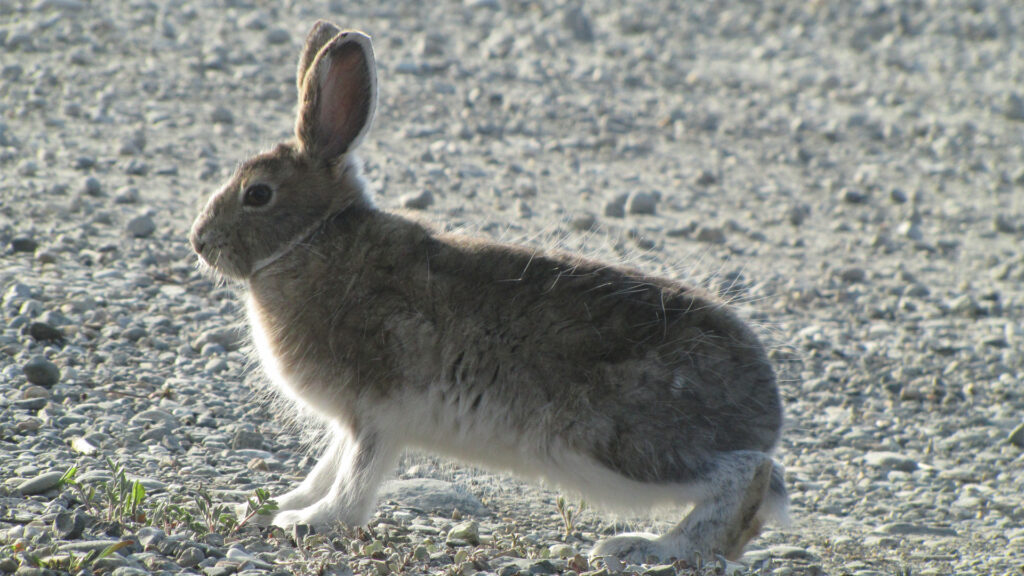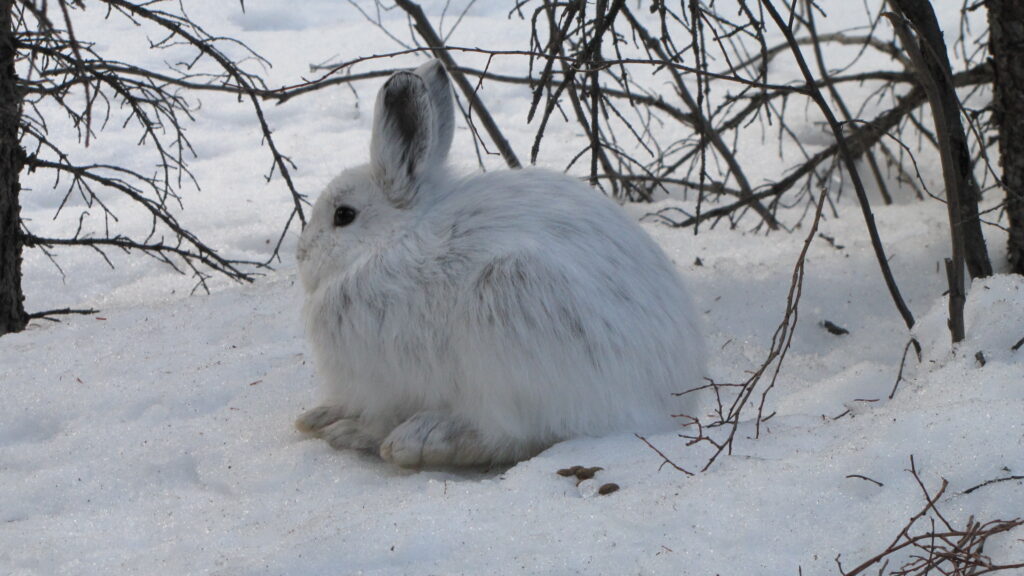By Samantha Murray, UF/IFAS
Like many animals in the far north, snowshoe hares change their coats from brown to white each autumn. Come winter, these all-white hares are harder for predators to spot against the snowy landscape, helping ensure their survival.
But as global warming reduces snowfall in the region, will the hares’ seasonal color swap continue to keep them safe?
Scientists from the University of Florida and Canada are beginning to answer that question. Their new study, which used 44 years of data on snowshoe hares in Canada’s Yukon Territory, shows that as the region has warmed, hares are waiting longer to turn pure white.

However, the data also suggest that waiting too long can be deadly. The scientists found that hares that were more brown than white in autumn were less likely to survive the winter.
“When it comes to the switch from brown to white, which we call molting, timing is everything. We can see in this study that climate change is making it harder for the hares to get that timing just right.” said Madan Oli, first author of the study and a professor in the UF/IFAS wildlife ecology and conservation department. “Hares begin to change color based on environmental cues such as temperature and snow depth, but the change doesn’t happen overnight. The whole molting process takes about a month. So, if hares are beginning to molt later in the year, there is a greater chance they will not be fully white by the time their environment is white. These hares are then more vulnerable to predators.”
Snowshoe hares are what ecologists call a keystone species because so many other animals depend on them for food, said Charles Krebs, senior author of the study and a professor emeritus at the University of British Columbia.
If the snowshoe hare population takes a nosedive, this could affect the entire ecosystem, he said.
“Practically everything eats snowshoe hares in the boreal forest. A big change in the number that survive the winter impacts their ability to replenish themselves over the summer breeding season, which could disrupt the whole food web,” Krebs said. The boreal forest, or taiga, rings the norther part of the globe and includes parts of Alaska, Canada, Europe and Asia.

Snowshoe hares are among 21 bird and mammal species in boreal forest that turn white for winter, which scientists call seasonal molting. This study is the first to track how seasonal molting has shifted with rising global temperatures.
The decades of data collection by Krebs and colleagues also makes the study unique, Krebs said.
“When you look over a forty-four-year span, you can really document a pattern. This study demonstrates the value and importance of long-term ecological monitoring,” Krebs said.
Between 1977 and 2021, Krebs and his collaborators went to the Kluane National Park and Reserve in Canada’s Yukon Territory each autumn and spring to study snowshoe hares. In the remote, often extremely cold wilderness they trapped snowshoe hares, recorded the percentage of white and brown in each hare’s coat, tagged each hare (or noted if it was already tagged) and set it free.
The researchers recorded observations for nearly 4,500 hares, with some caught multiple times over the years. Oli, who specializes in evaluating animal populations from a statistical and modeling perspective, and then wildlife ecology doctoral candidate Vratika Chaudhary, analyzed this massive dataset. The current study presents the results of that analysis.
The team isn’t done studying snowshoe hares in the Yukon, Krebs said. The scientists are currently recording the hare coat color and behavior using motion activated cameras. Images captures by these cameras will show how much — or how little — the hares coats are helping them match their environment in real time.
Samantha Murray is a public relations specialist at UF/IFAS Communications. This piece was originally published on the UF/IFAS blog.



